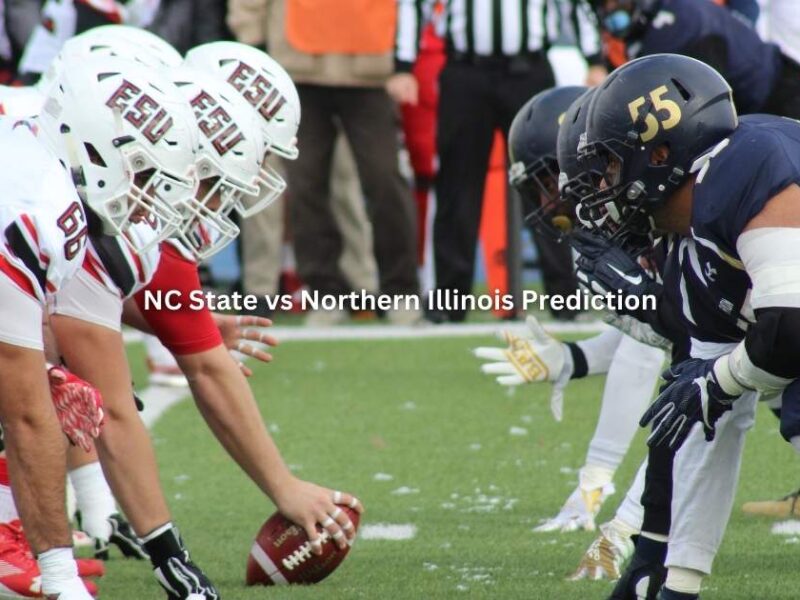Sports betting can be thrilling, but understanding the terms and numbers is key to success. One commonly discussed term is the point spread, often used to even the playing field between two competing teams. When you see a spread of -7, what does that mean? Let’s dive deep into this concept and explore its significance in sports betting.
What Is a Point Spread?
A point spread is a betting tool used to balance wagers between two teams with different skill levels. It assigns a hypothetical point advantage or disadvantage to each team, creating a more even matchup from a betting perspective. This allows bettors to make informed decisions rather than blindly picking favorites.
For example, if one team is significantly stronger, a point spread levels the field. Without spreads, bettors would overwhelmingly pick the stronger team, making the bets one-sided.
Breaking Down the Term “Spread of -7”
When you see a spread of -7, it reflects the bookmaker’s belief that one team is favored to win by seven points. Let’s break this down further.
- The Negative Sign (-): This indicates that the team with the spread is the favorite. In other words, this team is expected to win, but they must do so by more than seven points for the bet to pay out.
- The Number (7): This represents the margin of victory. The favorite team must win by at least seven points for the bettor to “cover the spread.”
The Role of Favorites and Underdogs
In every game, there are favorites and underdogs. Understanding their roles helps clarify the meaning of a spread of -7.
- Favorite Team: The team with the spread of -7 is expected to win, but they must outperform the set margin.
- Underdog Team: Conversely, the underdog benefits from the spread. Even if they lose, they “win” the bet if they keep the margin below seven points.
This dynamic keeps betting exciting, as it’s not just about who wins but also about how much they win by.
Example: Applying a Spread of -7
Let’s say Team A has a spread of -7 against Team B in a football game. Here’s what could happen:
- Team A Wins by 8 or More Points: If Team A wins 21-13, they cover the spread, and bets on Team A payout.
- Team A Wins by Exactly 7 Points: This is called a push. In this case, no one wins or loses, and bettors get their money back.
- Team A Wins by Less Than 7 Points or Loses: If Team A wins 20-14 (6 points) or loses, they fail to cover the spread. Bets on Team B win.
This example highlights how spreads make betting more nuanced than simply choosing the winning team.
Why Do Bookmakers Use Spreads Like -7?
Bookmakers aim to attract equal betting action on both sides of a game. A spread of -7 helps achieve this by making the favorite less appealing to some bettors. This balance ensures that bookmakers can profit regardless of the game’s outcome.
The spread isn’t just about predicting the game—it’s about managing risk and maintaining fairness in the betting market.
Impact of a Spread of -7 on Bettors
A spread of -7 challenges bettors to think critically. Instead of merely predicting the winner, you must evaluate whether the favorite can win by the specified margin. This adds a layer of complexity and strategy, making the experience more engaging.
Factors Influencing a Spread of -7
Several factors can lead to a spread of -7:
- Team Strengths: The favorite has a significant edge in skill, recent performance, or roster quality.
- Matchup History: Past games between the teams may indicate a clear advantage for one side.
- Injury Reports: Key injuries can shift the balance, prompting bookmakers to adjust spreads.
- Home-Field Advantage: Playing at home can significantly affect a team’s performance, often contributing to the spread.
Understanding these factors helps bettors make more informed decisions.
Common Misconceptions About a Spread of -7
It’s easy to misunderstand the concept of spreads. Many people think betting on the favorite is a guaranteed win, but that’s not true. Even if the favorite wins, they must cover the spread for your bet to succeed. A spread of -7 means bettors must weigh the likelihood of a dominant performance, not just a victory.
How to Approach Betting on a Spread of -7
Betting on a spread of -7 requires research and analysis. Here are some tips:
- Analyze Recent Performances: Look at the teams’ last few games. Have they consistently covered spreads of similar sizes?
- Consider Context: Is the game in the regular season or playoffs? High-stakes games can impact performance.
- Check Weather Conditions: In outdoor sports, weather can affect scoring, making it harder to cover large spreads.
By approaching your bets strategically, you can improve your chances of success.
The Risk vs. Reward of Betting on -7
Betting on a spread of -7 offers balanced risk and reward. If the favorite wins by a significant margin, you’ll profit. However, if they fail to cover the spread, you lose. This balance makes spreads a popular choice for experienced and casual bettors alike.
Conclusion
So, what does a spread of -7 mean? It’s more than just a number—it’s a reflection of the game’s dynamics, team strengths, and bookmaker strategies. Betting on a spread of -7 challenges you to predict not just who wins but by how much, adding an exciting layer of complexity to sports betting.
By understanding this concept and considering factors like team performance, injuries, and game context, you can make smarter, more informed bets. Whether you’re new to betting or a seasoned pro, mastering spreads like -7 is essential for success.
FAQs
1. Can a spread of result in a tie?
Yes, if the favorite wins by exactly seven points, it’s called a push. In this case, all bets are refunded.
2. Does a spread of -7 always apply to football?
No, spreads are used in various sports, including basketball, but football is a common example.
3. How do I decide whether to bet on a spread of -7?
Research team stats, recent performances, and other factors to assess whether the favorite can cover the spread.
4. What happens if I bet on the underdog with a spread of -7?
If the underdog loses by fewer than seven points or wins outright, you win the bet.
5. Are spreads always whole numbers?
No, spreads can be fractional, such as -7.5. This eliminates the possibility of a push.




One thought on “What Does a Spread of -7 Mean? Understanding Betting Basics”